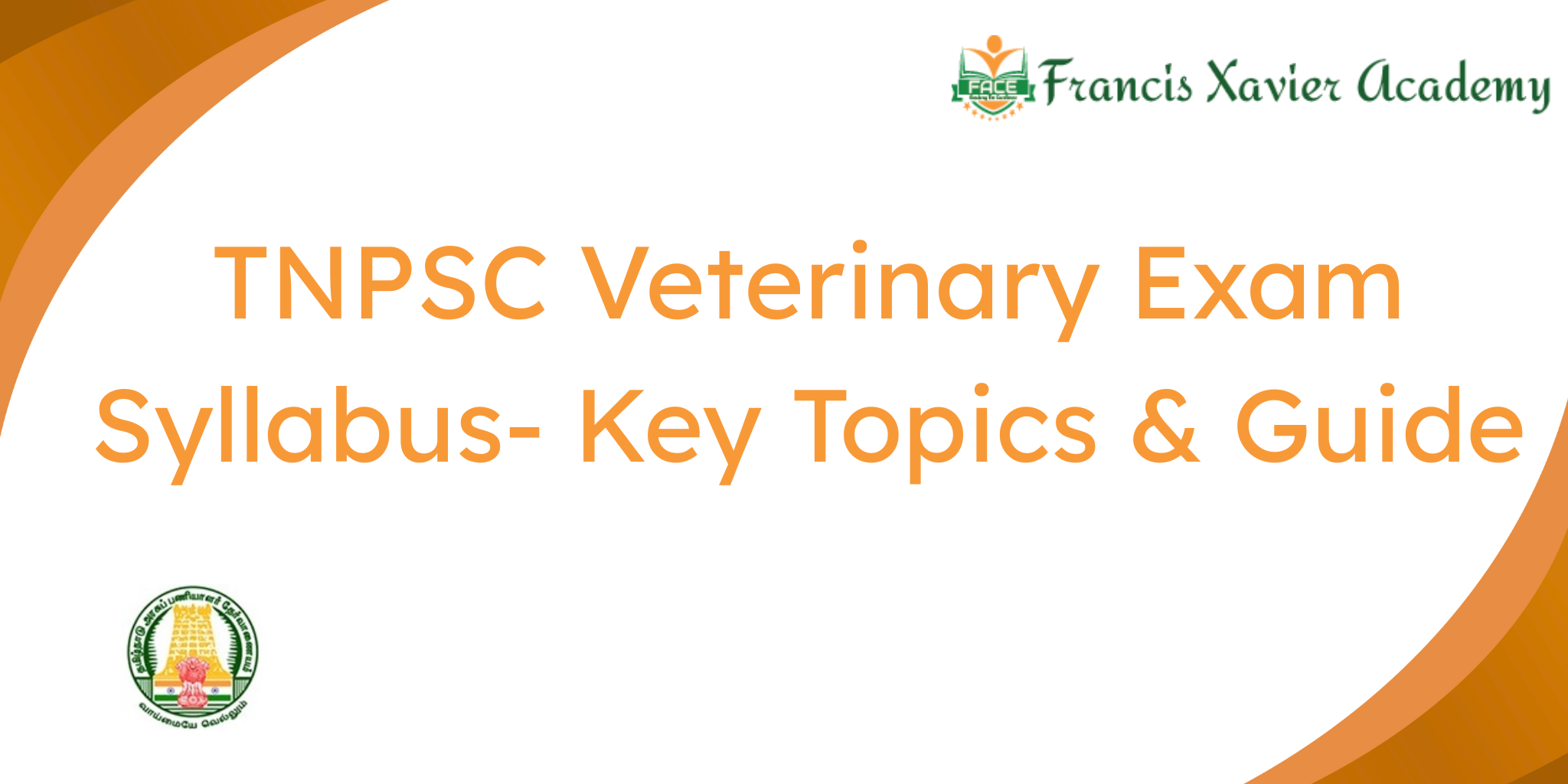
Animal Husbandry and Veterinary Science play a crucial role in ensuring food security, economic stability, and the overall well-being of livestock. This field encompasses various aspects, including breeding, nutrition, disease control, product processing, extension services, and clinical medicine. This TNPSC exam syllabus provides a detailed exploration of the subject as per the postgraduate syllabus.
UNIT-I: General Overview
- Importance of Livestock Management
Livestock management is vital for food security and economic development. The livestock population census at national and state levels provides insights into trends and helps in policy-making.
- Government Policies & Legal Framework
Animal Husbandry Policies: Tamil Nadu and the Government of India have several livestock development programs.
Legislation: Laws regulate animal disease control, import/export, and certification of animal products.
Veterinary Legal Responsibilities: Veterinarians must comply with laws regarding animal welfare, disease control, and food safety.
- International Trade & Intellectual Property
WTO, TRIPS, and IPR: These impact the livestock sector through regulations on trade, patents, and product standards.
Export and Import: Guidelines govern livestock and their products’ trade.
UNIT-II: Animal Breeding, Genetics, and Nutrition
- Animal Breeding and Genetics
Breeds: Cattle, buffalo, sheep, goat, pig, poultry, and pet animals.
Genetics: Selection, inbreeding, nucleus breeding, and molecular techniques.
Wildlife & Laboratory Animal Breeding: Conservation and research applications.
Feed Composition: Proximate analysis, fiber fractions, mineral and vitamin importance.
Feed Management: Storage, conservation, and unconventional feeds.
Laws & Regulations: Codex Alimentarius, HACCP, feed milling standards.
- Livestock Production Management
Housing Systems: Environmental control, waste disposal, and climate impact.
Reproductive Efficiency: Assessing productivity and disease management.
Dairy & Poultry Management: Farm records, hatchery techniques, and clean milk production.
UNIT-III: Livestock Products Technology
Milk Processing: Pasteurization, homogenization, UHT treatment.
Dairy Products: Butter, ghee, paneer, khoa, ice cream, cheese.
Food Safety & Regulations: FSSAI, HACCP, detection of adulterants.
Slaughterhouse Management: Rural and urban abattoirs, meat inspection, welfare.
Processing & Preservation: Chilling, freezing, curing, irradiation.
Meat Quality & Safety: Microbiological standards, Codex regulations.
UNIT-IV: Animal Husbandry Extension & Economics
- Extension Education: Teaching methods, ICT initiatives, rural outreach.
- Livestock Economics: Market trends, cooperative societies, feasibility studies.
- Government Schemes: State and central programs for farmers.
UNIT-V: Veterinary Anatomy & Physiology
Skeletal System: Differences in ox, horse, dog, pig, and fowl.
Organ Systems: Cardiovascular, digestive, reproductive, nervous.
Digestive & Metabolic Functions: Nutrient absorption in ruminants/non-ruminants.
Endocrine System: Role of hormones in lactation, stress management.
Blood & Circulatory System: Coagulation, blood pressure regulation.
UNIT-VI: Surgery & Radiology
- Surgical Techniques: Asepsis, suturing, anesthetic procedures.
- Fracture Management: Internal and external fixators, orthopedic issues.
- Imaging Technologies: X-ray, ultrasound, CT, MRI.
UNIT-VII: Gynecology & Obstetrics
- Reproductive Physiology: Hormonal influence on estrus cycles.
- Artificial Insemination & Embryo Transfer: IVF, semen handling.
- Pregnancy Management: Diagnosis, abortion treatment, dystocia handling.
UNIT-VIII: Veterinary Microbiology & Preventive Medicine
- Microbiology: Bacterial, viral, fungal infections, antimicrobial resistance.
- Immunology: Immune response mechanisms, vaccine quality control.
- Epidemiology: Disease surveillance, diagnostic techniques.
UNIT-IX: Pathology & Parasitology
- Pathology: Neoplasms, metabolic diseases, postmortem techniques.
- Parasitology: Life cycle, diagnosis, control of parasites affecting livestock.
UNIT-X: Clinical Medicine, Pharmacology & Toxicology
Disease Diagnosis & Treatment: Cardiovascular, respiratory, metabolic disorders.
Emergency & Critical Care: Blood transfusions, fluid therapy.
- Pharmacology & Toxicology
Drug Mechanisms: Pharmacokinetics, anesthesia, chemotherapy.
Toxicology: Poisoning treatments, herbal medicine applications.
Conclusion
Animal Husbandry and Veterinary Science encompass a vast range of disciplines, from breeding and nutrition to disease management and product processing. As the sector continues to evolve, new technologies and scientific advancements are enhancing livestock productivity and ensuring food safety. This TNPSC exam syllabus highlights how this field not only contributes significantly to the economy but also ensures animal welfare and sustainable agricultural practices.
 Now
Now